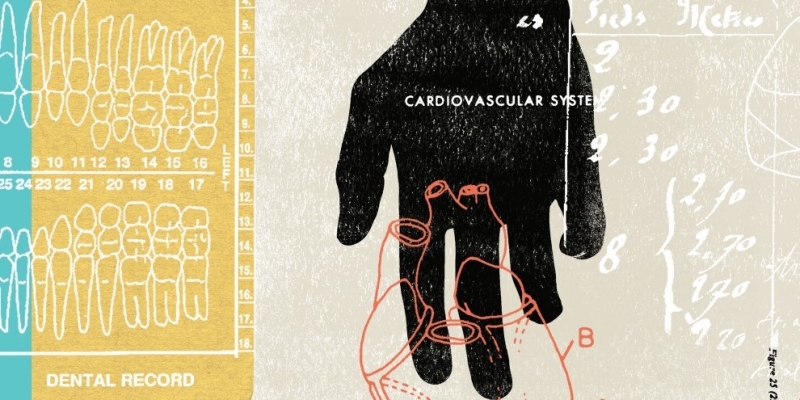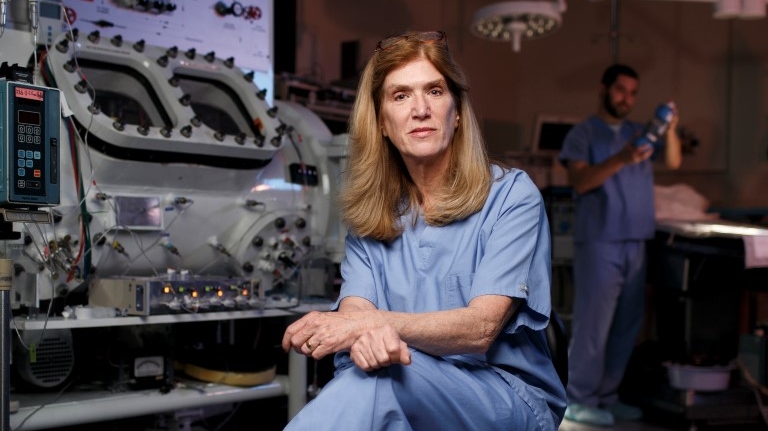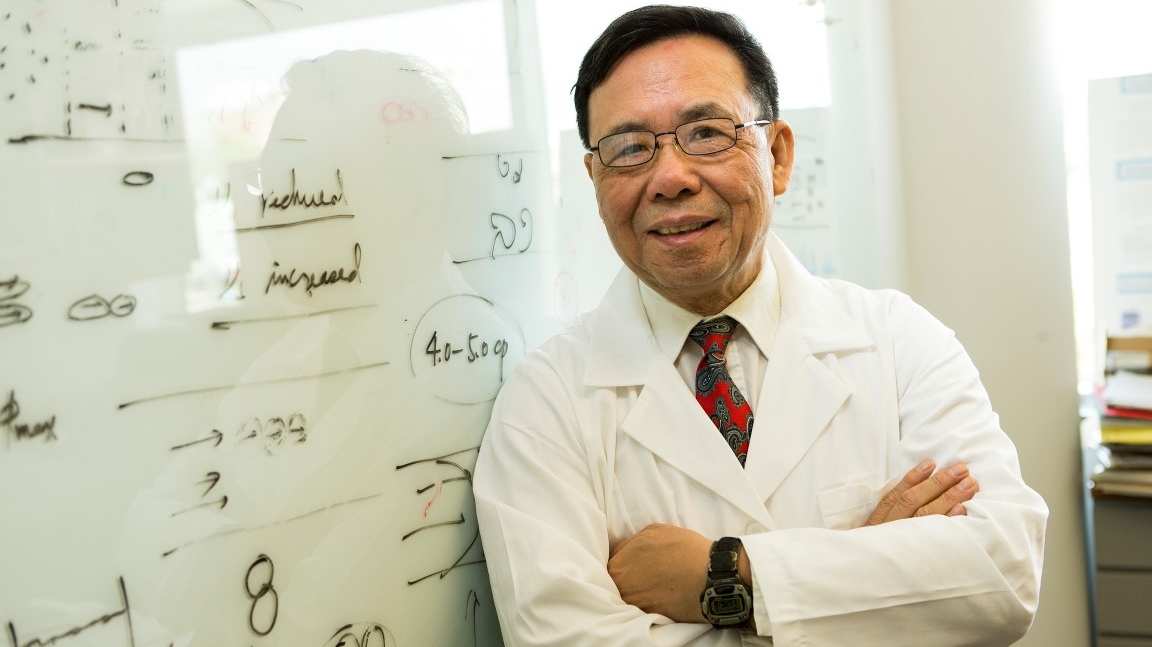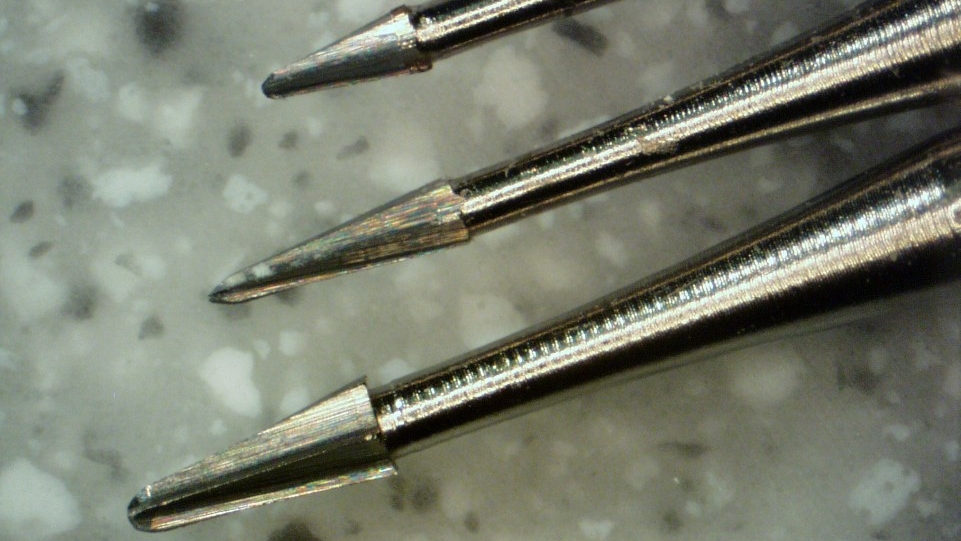Serial Successes
<p><em>When it comes to inventing, some people have it in their DNA.</em></p>
Story by:
Kim Fischer, CLA '92

Serial inventors are driven to innovate and create. At Temple, as at the country's top five research universities, approximately 10 percent faculty inventors account for 50 percent of the patents. Illustration by Russell Edling, TYL '13
For 48 hours, among the buzz of pulse oximeters measuring blood oxygen levels, the beeps of heart rate monitors and the blue glow emanating from the neonatal intensive care isolettes, Marla Wolfson remained at the side of Adriana Mancini. Born at just five-and- a-half months, Adriana weighed less than two pounds. The extremely premature infant was receiving liquid ventilation to help her breathe as a part of a clinical trial in which Wolfson, a pulmonary physiologist, was involved.
As Adriana gained strength, Wolfson witnessed her years of research on the medical application of a synthetic liquid called perfluorocarbon (PFC) come to fruition.
Preterm infants aren’t ready to breathe. Mechanical ventilation can help, but the sheer force of the air can also damage their fragile, underdeveloped lungs.
PFC caught Wolfson’s attention because it can hold three times more oxygen than air. When introduced to a premature infant’s lungs, the liquid, which is twice as dense as water, can coat every millimeter of the lungs and enable the baby to get much-needed oxygen without causing trauma.
For Wolfson, the clinical trial was the culmination of her team’s effort to convert scientific knowledge learned in the laboratory into meaningful outcomes for her patients.
BORN TO CREATE
Some, like Wolfson, are hooked on creating. These people are called “serial inventors,” says Michele Masucci, Temple’s vice president for research administration. “They are individuals who are driven to innovate and create, and they just can’t stop.”
“It’s magic when you make something real.”
-- DAN BOSTON, ASSOCIATE PROFESSOR OF RESTORATIVE DENTISTRY
Recently, researchers from Louisiana Tech University published a study on the prevalence and impacts of serial inventors. The findings highlight the disproportionate contributions of serial inventors at the top five research universities.
And the contributions were the same among the five institutions studied: At each one, approximately 10 percent of faculty inventors account for 50 percent of the patents.
That ratio holds true at Temple.
NEVER STOPPING
Wolfson, who holds professorships in physiology, pediatrics and medicine in the Lewis Katz School of Medicine, boasts one of Temple’s largest patent portfolios—14, developed in collaboration with colleague and Professor Emeritus Tom Shaffer.
Neonate lung support, the application of one of the team’s first patents, is Wolfson’s longest-running research project, but her work doesn’t end with infants. Another of her patents demonstrates the ability to deliver medication, including antibiotics, through PFC to both infants and adults. Yet another area of development is a novel technique to reduce swelling and damage to the brain by cooling it through the administration of aerosolized PFC via the nose. As such, the technique is particularly beneficial for blast-related brain injuries and has unique application for troops injured in combat. Wolfson has also patented the use of PFC to protect adult lungs from the effects of high altitudes. And the list goes on.
“Pursuing patents, FDA approval and commercialization of our discoveries is the best way I know of to help real people,” says Wolfson. “And I am able to use the revenues I receive to further my research.”
A CULTURE OF INNOVATION
“When we can advance a product or technology to the marketplace, that’s when we see the benefit to society,” says Steve Nappi, Temple’s associate vice president for technology commercialization and business development. “That’s our ultimate goal.”
For each invention by Temple researchers that the university elects to pursue, the Office of Technology Development and Commercialization at Temple works with external patent counsel to determine the most appropriate intellectual property protection—such as patents and copyrights—and commercialization strategy. This can include licensing the product or technology to an existing company or creating a spin-out startup company.
“At Temple, we are striving to build a culture of innovation and commercialization,” says Nappi. “For that to exist, there needs to be universitywide support, and that is what is happening right here at Temple.”
THE SKY’S THE LIMIT
Licensing agreements for fuel injection and crude oil transport technologies have brought Professor of Physics Rongjia Tao one of the largest royalty checks ever received by a Temple researcher: $132,254.
A theoretical physicist by training, Tao came to the U.S. from China in 1979 to study with Nobel Prize—winner and famed Chinese American physicist T.D. Lee.
But even as his interest lies in developing theories, Tao says he has also always enjoyed applying his theories to real life. “I like to see for myself if my theories work in the real world,” he says.
Tao began his oil research with a $160,000 grant from the RAND Foundation to study offshore oil transportation.
Offshore drilling uses undersea pipelines to transport oil, but crude oil is nearly impossible to transport that way because the temperature is low and the viscosity—or thickness—is high, says Tao. In the past, researchers had tried various methods to move the oil through the pipes, including heating it with microwaves and coating the pipe walls with various polymers, all with little or no success.
Tao speculated that the viscosity of crude oil could be lowered in other ways. He began with the understanding that the high viscosity of crude oil was related to particles that were added to it. Because the flow of a liquid depends on how the particles in it are arranged, he decided to test whether or notn temporarily aggregating or organizing the particles would reduce the viscosity.
Indeed, applying an electromagnetic field to the crude oil for 50 seconds reduced the viscosity by 20 percent.
“Once we worked out the physics, we could see many applications for it,” says Tao. “We realized not only could we use this technology to boost engine efficiency, but we also began to see applications to the medical field and beyond.”
If blood is too thick, it can damage blood vessels and increase the risk of heart attack. Previously, the only method for thinning blood was through drugs, which can produce unwanted side effects.
Knowing the red blood cells containing iron are responsible for high viscosity in blood, Tao experimented to see if applying a magnetic field could make the blood thinner. It worked.
The magnetic field polarized the red blood cells, causing them to link together in a chain, streamlining the movement of the blood and allowing it to flow more freely.
Then Tao found that by using similar technology, he could make chocolate healthier. To do this, the fat content has to be reduced. But when the fat is removed, the liquid chocolate becomes thicker and clogs
the manufacturing pipelines.
Tao and his team theorized that by applying an electric field, they could thin out the chocolate enough that it would flow smoothly through the manufacturing process, even with the fat reduced. Again, he had success.
Tao has also patented the use of his technology for smart fire sprinklers that will automatically turn off during false alarms and for remotely detecting hazardous material, including nuclear and chemical agents and explosives.
Asked if he has reached the limit on the ways his electromagnetic technology can be used, he says, “probably not yet.”
ONWARD AND UPWARD
Nappi’s team aims to help faculty inventors from the beginning to the end of the commercialization process. It’s a team that lastyear reached new heights by entering into 18 license and option agreements for Temple inventions, equal to the prior three years combined. Additional records were set the same year for patent applications filed: 33; and companies formed: five. To put the upward trajectory in perspective: In the past five years, inventions or discoveries by Temple researchers have increased by 120 percent over the prior five years.
That increase has been accompanied by a jump in revenue to the university. Over the past five fiscal years, Temple received $15 million from the licensing of university-created technology. Temple’s 21 active spin-out startups have raised $380 million total in the past 15 years, and companies formed in the past three years have raised $9 million.
The growth in licensing income has enabled Temple to pursue new initiatives, such as a technology-development program and a joint seed fund for early-stage companies.
“Our vision is to create a comprehensive portfolio of commercialization resources for Temple’s inventors,” says Masucci.
DRIVEN TO IMPROVE
Associate Professor of Restorative Dentistry Dan Boston, who recently retired after 27 years of full-time teaching, says he is always looking for ways to improve how something is being done. “I always have ideas in the pipeline, and I carry around a sketchbook to jot them down,” he says.
Boston’s first invention was a bur, a dental drill bit to treat cavities very conservatively. “The available technology was basically a mini sandblaster. It did a great job, but it was large, expensive and not readily portable,”
says Boston. “In addition, existing dental burs were not optimized for this approach.”
Boston’s bur allows for a minimally invasive approach for treating cavities and placing dental fillings. Temple University licensed his patent and design to SS White Dental, which markets the product as the Fissurotomy Bur.
His second invention expanded on the earlier concept of conservative treatment to create a smart bur. It is a polymer-based drill bit that removes soft decay from a cavity but stops when it reaches healthy tooth.
“I created the initial smart bur prototypes at home in my basement at night,” he recalls. “I was able to use funds from my Laura Carnell Professorship to purchase special materials for it, and I received a university grant to test it.”
Temple University has also licensed these patents to SS White Dental, which markets the product as the SmartBur II.
Boston says his inventions and their commercial development are one of the highlights of his career: “The 20 years of royalties are, of course, not bad, but it’s magic when you make something real.”
For Wolfson, the magic comes when she can bring her technology to the people who need it.
She has stayed in touch with the families of her young patients and is proud to say the first cohort of babies in the clinical trial, including Adriana, graduated from college this year.
“I’m going to keep at it, keep working to bring new ideas into the world to save and improve lives,” she says. “I’m in it for the long haul.” ■


